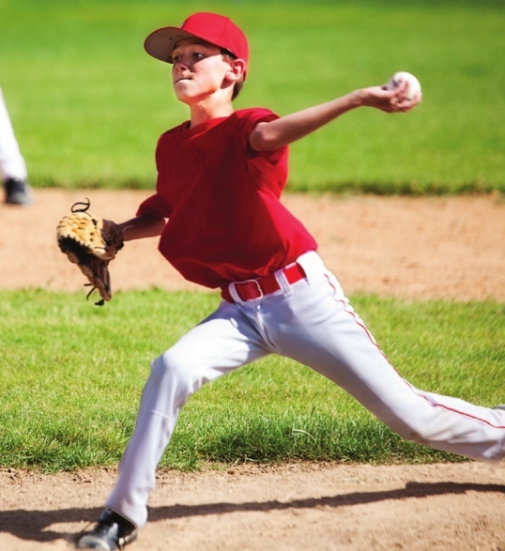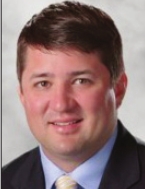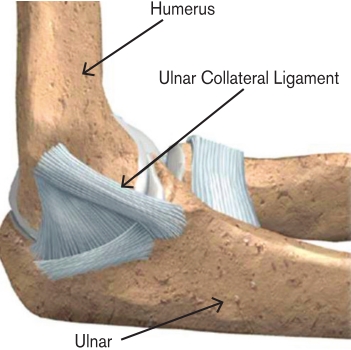ELBOW PAIN IN THROWERS

How to treat sports injuries
Baseball and softball seasons are in full swing, and one of the most common injuries which I treat in these athletes is elbow pain. Baseball players are the athletes most commonly affected; elbow symptoms account for up to 97 percent of elbow complaints in pitchers. However, athletes who participate in other sports that require similar overhead motion, such as football, volleyball, tennis and javelin throwing, can also be affected. In this article, I will focus on two of the most common elbow injuries.
Little League Elbow Little League elbow is a general term relating to several abnormalities in the elbow of the young overhead athlete, including avulsion fractures, stress reactions and growth plate inflammation. Little League elbow results from repetitive stresses and tension overload of the elbow structures. Repetitive contraction of the inner elbow musculature stresses the tendon-bone origin, leading to inflammation of the growth plate.
Skeletal maturation of the elbow bones occurs typically between ages 6 to 14-16.
These bony maturation rates are highly variable and also differ by sex; rates in females usually precede those of males by six to 12 months. Affected athletes are usually younger than age 10 and typically report medial (inner) elbow pain, decreased throwing effectiveness and decreased throwing distance. Patients may exhibit elbow swelling, focal tenderness over the inner elbow and stiffness. X-rays should be done of the opposite elbow to compare the growth plates to the symptomatic one.
Generally, treatment consists of two to four weeks of rest and anti-inflammatories, followed by stretching and strengthening exercises of the elbow, with gradual return to throwing at six weeks if the athlete is symptom-free. Occasionally, symptoms may persist for extended periods, typically because of inadequate rest or activity modification. In these instances, brief splint immobilization may be necessary, and the patient should not resume throwing until pain-free.
 Ulnar Collateral Ligament (UCL) Tears UCL
injury was first described in javelin throwers in 1946. In 1974, Dr.
Frank Jobe performed the first surgical technique to reconstruct the
UCL. The first patient was a major league baseball pitcher named Tommy
John, and the procedure became known as the “Tommy John” Procedure.
Ulnar Collateral Ligament (UCL) Tears UCL
injury was first described in javelin throwers in 1946. In 1974, Dr.
Frank Jobe performed the first surgical technique to reconstruct the
UCL. The first patient was a major league baseball pitcher named Tommy
John, and the procedure became known as the “Tommy John” Procedure.
A thorough history is critical to properly diagnose UCL injuries in the throwing athlete. Some patients report an actual “pop” (acute injury) that occurred while throwing, whereas others may report only chronic, vague pain that affects pitching accuracy or velocity.
The UCL approaches the maximum angular torque allowable with every pitch, which explains why UCL injuries are so common in competitive pitchers. The force on the UCL when throwing averages 290 Newtons; ultimate load to failure of the ligament is 260 Newtons.
The number one cause of UCL injuries is overuse. Poor shoulder mechanics also lead to higher incidence of UCL tears. Diagnosis is made by laxity of the UCL on physical exam, pain over the UCL on palpation, and MRI with contrast dye, which is 92-100 percent accurate. Complete tears require surgery in order to return to overhead throwing at a high level. Only 42 percent of patients return to throwing at the same level of competition with non-operative treatment of complete tears.
UCL reconstruction, “Tommy John” Surgery, involves rebuilding the ligament with a graft tissue, usually taken from the patient's own forearm or hamstrings. The graft can be secured into the bone in several different manners, based on the surgeon's preference. Surgery success rates are between 80-90 percent. The return to throwing program involves gradually increasing throwing distance and velocity on a flat surface and then off the mound. Return to play is usually between nine to 12 months if no pain while occurs while throwing and elbow/shoulder range of motion and strength are normal.
Even with the implementation of injury prevention programs, UCL reconstructions increased approximately 10-fold in the past 15 years. Injury prevention in baseball is difficult due to increased play and competition at the youth level. Baseball, once considered a seasonal sport, has now routinely become a year-round event, with increased travel team play and sponsored tournaments. Studies have shown that players who pitched more than 100 innings in one calendar year had a 3.5 times greater chance of sustaining a serious elbow injury. Youth pitchers should be discouraged from pitching for multiple teams and showcases because doing so has been associated with elbow injuries. Types of pitches thrown is not as important as number of pitches thrown. Recommendations for the Pitch Smart USA Baseball program can be found at http://m.mlb.com/pitchsmart/pitchingguidelines/.
There is no data to support the misconception that UCL reconstructive surgery will improve pitching beyond the preinjury state, and I do not recommend prophylactic reinforcement of the UCL in young aspiring pitchers. Continued efforts are needed to better educate players, coaches and parents regarding the prevention of overuse throwing injuries.
Carlton Houtz, M.D. is an orthopaedic sports medicine surgeon at Highland Clinic Center of Orthopaedics and Sports Medicine who routinely performs elbow ligament reconstruction surgeries, such as the Tommy John procedure. He can be reached at 798-4623, and his office is located at 1455 East Bert Kouns Industrial Loop, Suite 210, Shreveport. His office Web site is www. highlandclinic.com.
